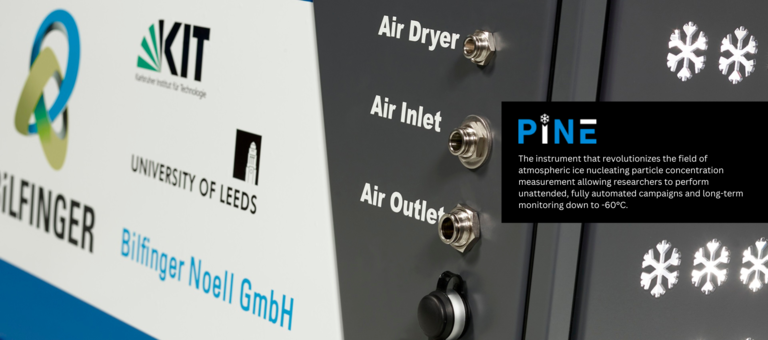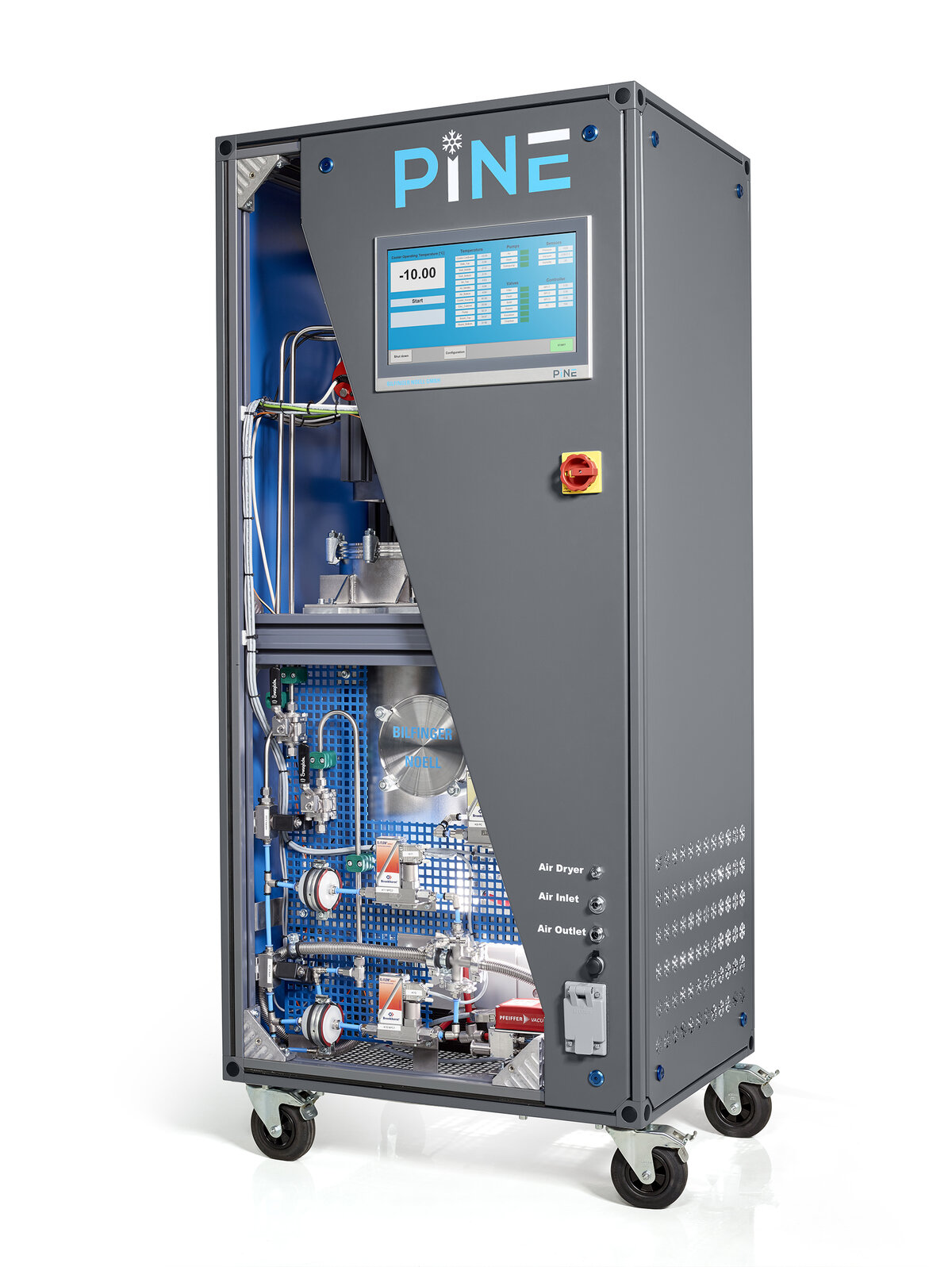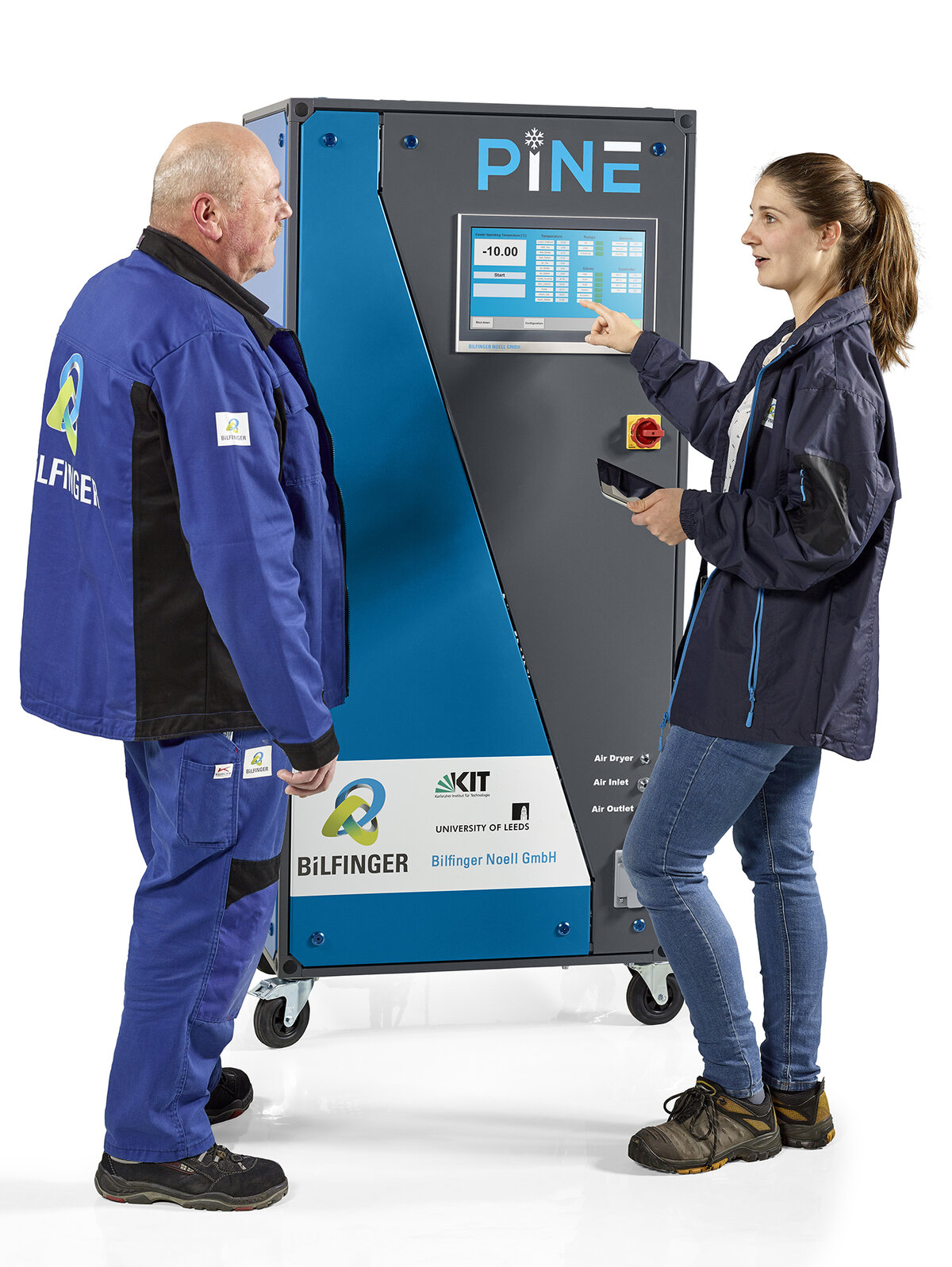
Portable Ice Nucleation Experiment
Instrument (PINE)
Developed in Cooporation with:



PINE - Accurate Measurement of INP Concentration
Ice nucleating particles (INP) are the source for primary ice formation in clouds, hence their concentration has a critical impact on the temporal and spatial distribution of precipitation as well as a major impact on climate. PINE enables the accurate measurement of INP concentration, thus providing researchers and meteorologists with a unique and valuable insight on the temporal evolution of INP. Alternative technologies do not offer minimal user input automation or the sensitivity to the huge range of atmospheric INP concentrations over a broad temperature range at high time resolution and at conditions relevant for a range of clouds types. In addition, PINE provides information on the overall aerosol concentration.
Applications
- Ice nucleating particle concentration measurement for atmospheric and climatic observation
- Cloud physics research


PINE:
the first instrument to automatically measure long-term series of INP concentrations at high sensitivity, time resolution and in a wide range of temperatures.
How it works
The core element of PINE is an air tight vessel, which can be cooled to a specified temperature. Air is drawn into the chamber through a valve at the top, and pulled through by a pump below. The pressure within the chamber is then reduced, causing the temperature to drop and an adiabatic expansion to occur. The chamber is temperature controlled, allowing for measurements to be taken between 0 and −60°C. The frost point within the chamber is measured, and the humidity within is controlled to ensure that frost build up does not occur on the walls of the chamber. Detection occurs by particles being drawn through an Optical Particle Counter (OPC) which records the particle count and aerodynamic particle diameter.
Operation modes
1. Immersion mode:
This will form a cloud within the chamber, as liquid cloud droplets form on the aerosol. If the aerosol is an INP, the water droplet will nucleate and an ice crystal will form and grow to much larger sizes than water droplets.
2. Super saturation mode:
It will induce deposition freezing, water vapor will freeze directly onto aerosol particles as the temperature within the chamber decreases. These particles will again be distinct in size from the aerosol particles and hence detectable.
Links & Downloads
Measurement activities and campaigns can be followed online at this link:
KIT - IMK-AAF - Competences - Ice Nucleating Particle Measurement - PINE INP monitoring
For detailed information about the capabilities of PINE and the science case see Möhler et al., Atmos. Meas. Tech., 14, 1143–1166, 2021.

Leiter Vertrieb Magnettechnik
